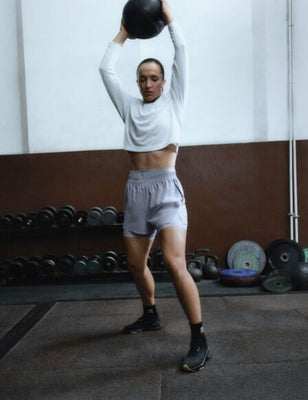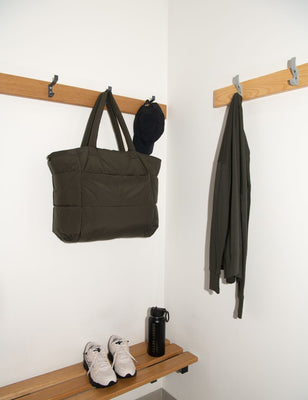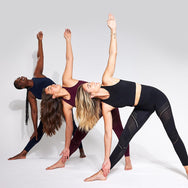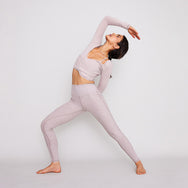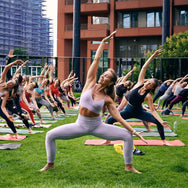
The world is starting to look a little brighter. Yes, last month, gyms across England finally flung open their doors. While there are plenty of restrictions in place, it marks a welcome change for those of us who are tired of the home workout game. Whether you’re restarting your existing membership or trying somewhere new, getting back into a regular gym routine may be at the top of your priority list.
Ahead of grabbing your water bottle and towel and rushing to your nearest gym, there are some hot tips you might want to hear. Ensuring that you put your physical and mental safety first has never been more important. Luckily, we’ve got you covered in this department. Check out seven simple ways you can protect yourself.
Tip #1: Put your personal safety first
Gyms may be open, but you need to consider whether heading straight back is right for you. We all have different comfort levels and, in the wake of a pandemic, you’re perfectly within your rights to decide what suits you. Pause to think about whether you are ready to resume your regular gym routine.
If you’re feeling worried about your first time back at the gym, it may help to do some research first. You can contact your gym directly or check out their website to find out what safety measures they are taking.
Tip #2: Take your first session easy
Ready to hit the treadmill or get lifting? You might want to take a step back. “Leave your ego at the door,” says Ben Lombard, a specialist physiotherapist based in Finsbury Park, Ben Lombard Physiotherapy. “Don’t expect to lift as heavy, or to workout at as high intensity as you have done in the past.”
When you first go back to the gym, you might find that it’s harder to workout than it was pre-pandemic. That’s okay. Don’t be too hard on yourself. It’s been a difficult year for the best of us. Take your exercise at a pace that suits you and your body. Avoid trying to push yourself too hard when you first start out.

Tip #3: Always warm up and cool down
Don’t forget the basics when you start training again. Ensuring that you look after your body will help you to prevent injuries. “Thoroughly warm up and cool down. We’ve been more sedentary for the last 14 months. You are likely to have developed numerous muscle imbalances and weaknesses over that time,” says Lombard.
You may already have a warm-up routine that works for you. If not, take Lombard’s advice on the matter. “A good warm up to raise the heart rate, improve blood flow and increase tissue flexibility is key. Similarly, a warm out to bring down your heart rate smoothly will aid recovery,” he explains
Tip #4: Get your priorities straight
You might have a certain part of your body that you want to work on. That’s cool. You can get to that when you’re back in the swing of things. However, as Lombard explains, when you first start working out again, you should mix up the types of exercises you do.
“Prioritise movement quality and variety rather than resistance and volume,” says Lombard. “By that I mean make sure you are working with lots of different types of movement or muscle group in different planes of motion, focussing on the technique rather than the weight and the amount of repetitions.”

Tip #5: Avoid overworking yourself
Chances are, you’re eager to get yourself back to peak fitness (we all are!), but that doesn’t mean that you need to go all in. When you first return to the gym, keep in mind that it’s all about balance.
“Take your work-rest ratio into account,” says Lombard. “You have muscle memory working in your favour, more frequent and aggressive workouts won’t necessarily give you faster or better results than slowly progressive workouts with good quality rest—sleep, recovery and nutrition—between workouts.”
Tip #6: Plan your workouts
While we’re on the topic of balance, you might want to start planning your workouts. “Structure is key. Not only session planning, but also looking at the bigger picture and trying to plan out a full week to 10 days worth of workouts at a time to ensure you are not overtraining certain body parts,” says Lombard.
Tip #7: Listen to your body
Finally, it’s time for perhaps the most important piece of advice. “Don’t ignore niggles and injuries,” says Lombard. “Get them seen by someone like me, get some exercises specific to you and your needs to add into your sessions. Training through an injury will only lead to bad times all round.”
Ignorance is definitely not bliss. The moment that something feels ‘different’ or ‘not quite right’, you need to stop and look into that. Avoiding the problem won’t make it go away and could make things worse. The sooner you get an expert’s advice and help, the better it is likely to be for your physical health.

The Takeaway!
Getting back to the gym is a big step and you have to ensure that you’re ready for it. Following our tips and thinking about what works for you is the way to go. Remember that we’re all different. What works for you may not work for someone else. Take things at your own pace and get back on it!







